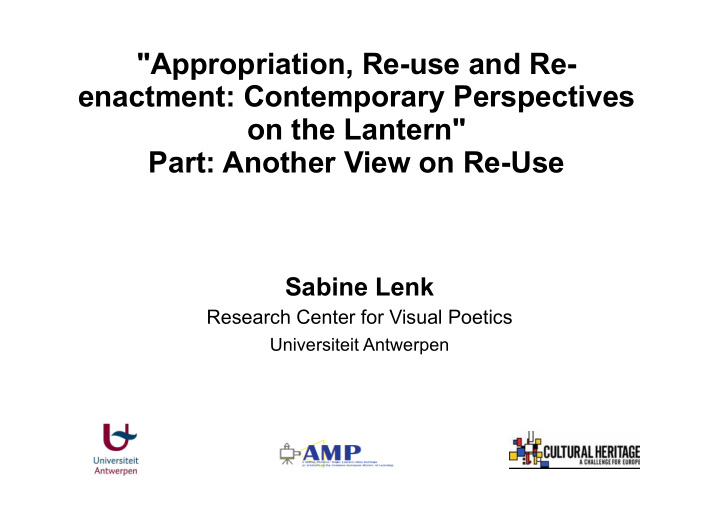



"Appropriation, Re-use and Re- enactment: Contemporary Perspectives on the Lantern" Part: Another View on Re-Use Sabine Lenk Research Center for Visual Poetics Universiteit Antwerpen
1. Introduction 2. The influence of the canon and some ideas on the genesis factors 3. What is not part of the “slide canon”? 4. Re-using “outside-the-canon-slides” in the 21 st century
The Wall
Two slides in the wall Heilig Graf Muur Slides008 Heilig Graf Muur Slides013
Researcher Nele Wynants and curator Peter Coupé in the attic of the school in Turnhout
German Toy Lantern Slide Depicting Castles on the River Rhine, and Text
Comets
Disturbing factors - the incoherence with the traditional magic lantern slide canon; - the transgression of boundaries with other media categories such as: postcards, (amateur) photography, newspaper illustrations, colour books for children, picture series from collecting albums etc.; - the mixture of production styles: the slides were photographed, printed, copied, black and white with hand-coloured details etc.
Slides outside the canon
Characteristics of Slides Outside the Canon Mostly slides which are - self-made by copying photographically illustrations from books, newspapers etc. - presenting a certain degree of “amateurishness”; - revealing their (mass) production process by showing aesthetically unpleasant marks such as a newspaper printing grit, coarse-grained dots on toy slides from the 1920s, pale contrast, fuzzy areas, clumsy colourisation etc. - functional-practical instead of appealing; - not self-explaining, thus needing an explanation of the content; - not part of a “fictional narrative”;
Characteristics of Slides Outside the Canon Mostly slides which are - mere “stand alone” artefacts rather than being part of a series, thus forming a chain of short distinct “instants” instead of an overarching discourse that progresses following a dramatic structure; - difficult to deal with as, even when part of a series, they hardly provide an opportunity for a smoothly structured talk; - missing visual attractiveness to charm the audience; - becoming only interesting when the historical context, the slide was made for, is revealed and touches the audience; - escaping attribution as they blur the boundaries between different media such as postcard, newspaper, book, (amateur) photography etc.
Slides Outside the Canon
Thank you for your attention
Recommend
More recommend